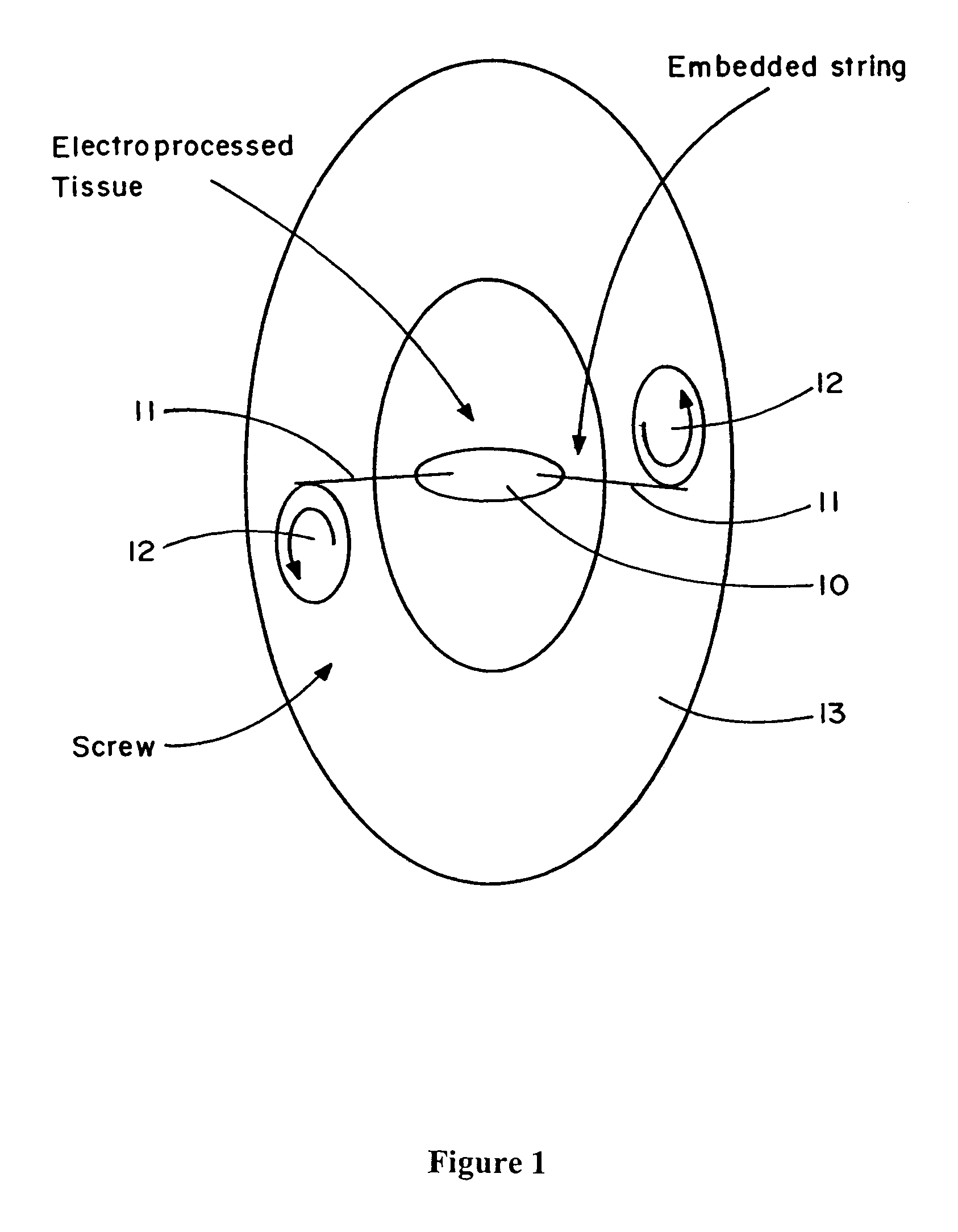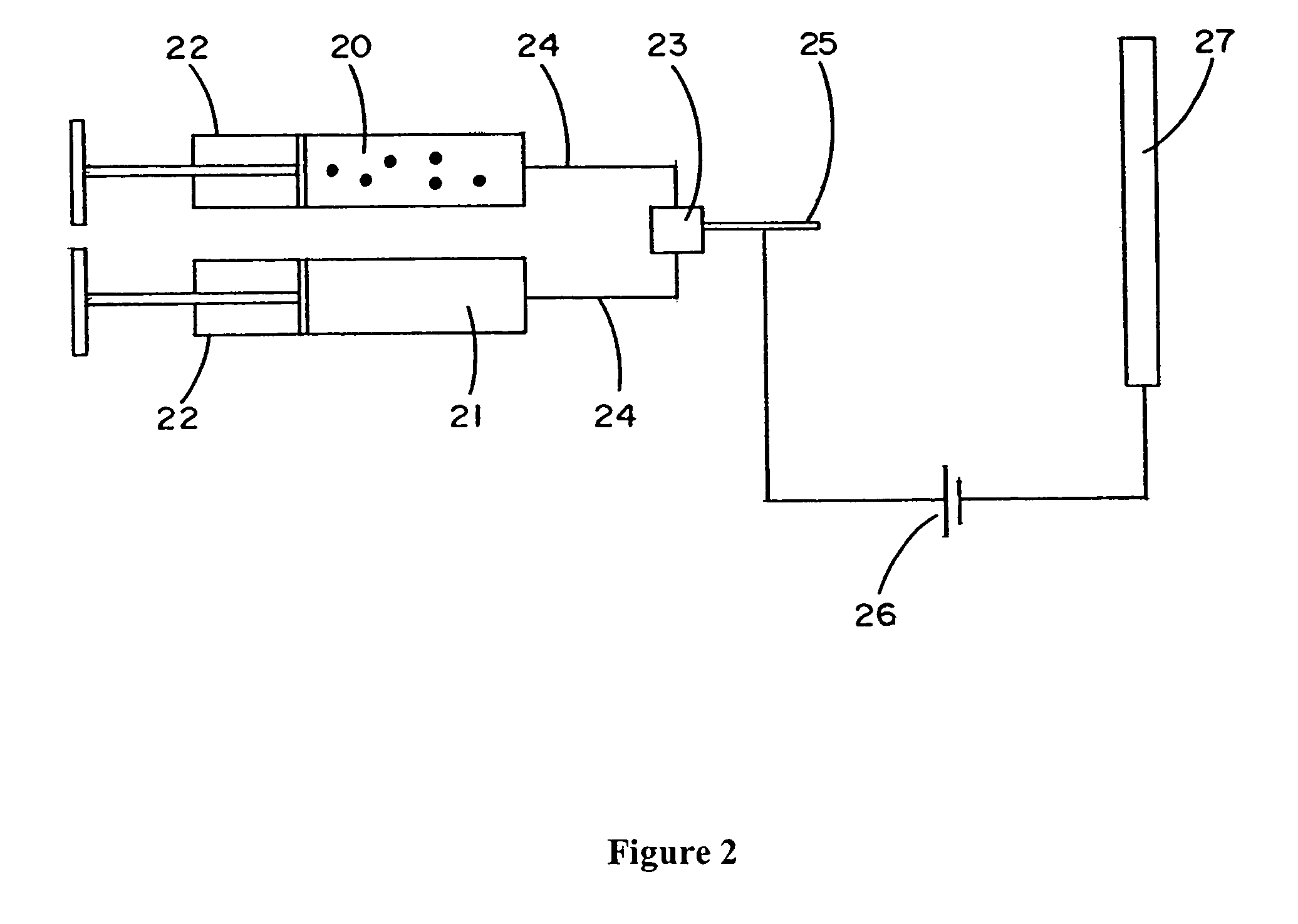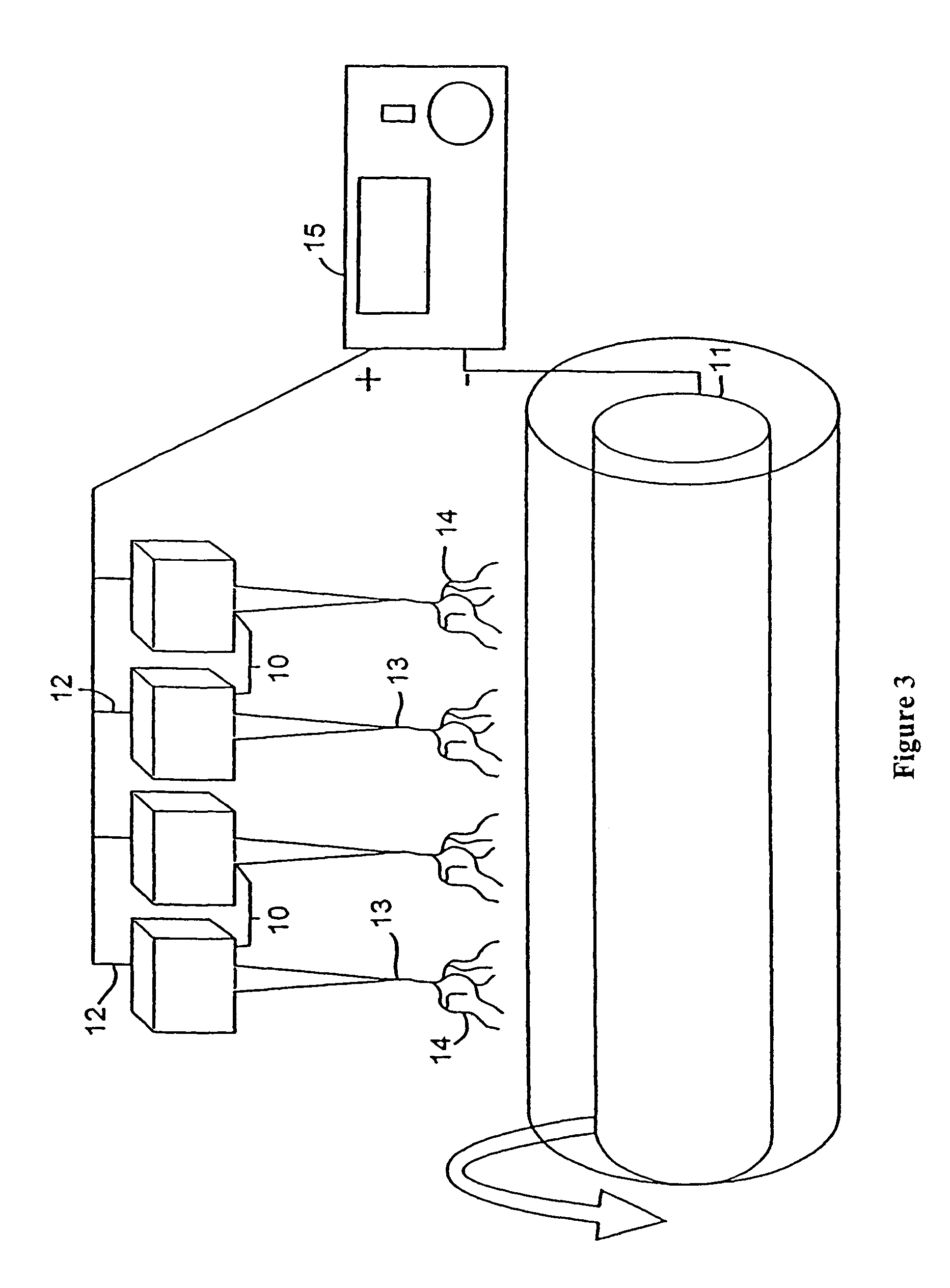Electroprocessed fibrin-based matrices and tissues
a fibrin-based matrix and tissue technology, applied in the field of fibrin-based matrix and tissues, can solve the problems of affecting tissue and organ replacement in patients with failing or damaged organ function, affecting the immune system, and limited in number, so as to minimize the chance of immune rejection
- Summary
- Abstract
- Description
- Claims
- Application Information
AI Technical Summary
Benefits of technology
Problems solved by technology
Method used
Image
Examples
example 1
Cell Culture
[0145]Several types of cells are used in experiments with the fibrin and plasma:
[0146]a) Schwann cells from transgenic mice with truncated SCIP transcription factor. These cells have shown premature and excessive myelination in vivo. This line of cells was selected, because they can be easily cultured in large quantities without any special factor.
[0147]b) Primary rat Schwann cells from sciatic nerve. These cells do not divide under the following experimental conditions. Those test cells were not from a cell line.
[0148]In all cases the cells were maintained in 10.5 cm2 plastic culture flasks with Dulbecco's modified pyruvate-free Eagle medium augmented with 10% bovine serum and 1% streptomycin-penicillin (Gibco BRL, Grand Island, N.Y.). The cultures were placed in an incubator at 37° C., 7% CO2 and 100% relative humidity (RH).
[0149]Cells type (a) were cultured to confluence then harvested. Cells type (b) were harvested as needed. Cells type (c) were grown in subconfluent...
example 2
Preparation of Thrombin, Fibrinogen and Plasma Stock Solutions
[0150]Thrombin was obtained from Baxter as a lyophilized power and dissolved in 10 mM calcium chloride in deionized water to a concentration of 50 units / mL. Alternatively, lyophilized thrombin (Sigma, American Diagnostic, etc.) can be dissolved in 0.15 M NaCl and calcium can be added at the time of clot formation. Blood was obtained by aseptic, nontraumatic venipuncture of a normal volunteer. The blood was collected into blue top vacutainer tubes containing 3.8% sodium citrate. The citrate binding of calcium prevented coagulation of the sample. Platelet poor plasma was prepared by centrifugation at 10,000 g for five minutes. Plasma was decanted from the top of the spun tube leaving the last centimeter depth of plasma on top of the cells to minimize cellular contamination. The citrated platelet poor plasma was filtered through a 0.45 micron filter under sterile conditions to remove fine particulate. Unused portions were st...
example 3
Orientation of Electroprocessed Fibrin and Cells
[0151]Cells are known to adapt to their environment to suit their needs. Both muscle cells and Schwann cells self-reorganize fibrin strands into a highly oriented structures. Cells in an electroprocessed fibrin matrix may be oriented through application of mechanical force.
[0152]An electroprocessed tissue comprising electroprocessed fibrin matrix and cells (fibroblasts) to be used as skin is subjected to force in the following manner. A short piece of sterile Normex string 11, a stranded polyimid polymer string from Dupont, is attached to each end of the electroprocessed tissue (FIG. 1). Each end of the Normex string 11 is then attached to a set of nylon screws 12 mating with a 5 mm thick polyethylene holder 13. There is sufficient friction between the screws 12 and the holder 13 to prevent any motion once the screws are set. The Normex strings 11 are tensioned by slightly turning the nylon screws 12 until the fibrin strains in the ele...
PUM
| Property | Measurement | Unit |
|---|---|---|
| diameter | aaaaa | aaaaa |
| diameter | aaaaa | aaaaa |
| diameter | aaaaa | aaaaa |
Abstract
Description
Claims
Application Information
 Login to View More
Login to View More - R&D
- Intellectual Property
- Life Sciences
- Materials
- Tech Scout
- Unparalleled Data Quality
- Higher Quality Content
- 60% Fewer Hallucinations
Browse by: Latest US Patents, China's latest patents, Technical Efficacy Thesaurus, Application Domain, Technology Topic, Popular Technical Reports.
© 2025 PatSnap. All rights reserved.Legal|Privacy policy|Modern Slavery Act Transparency Statement|Sitemap|About US| Contact US: help@patsnap.com



